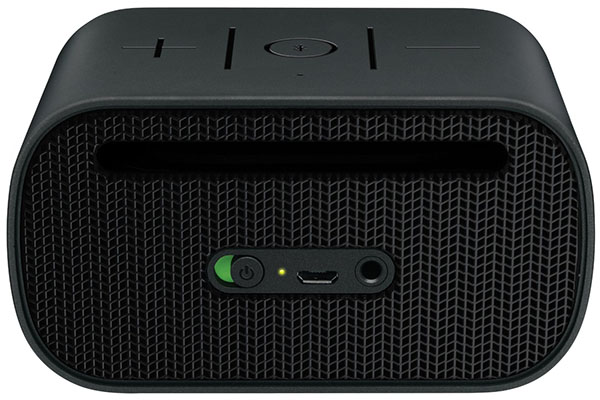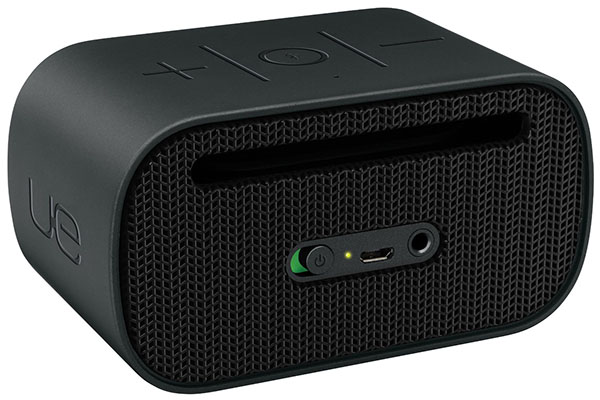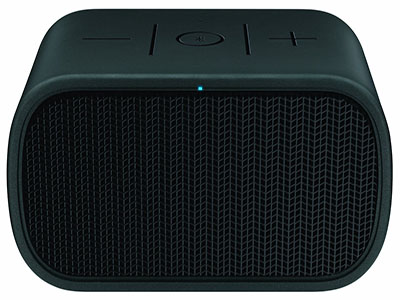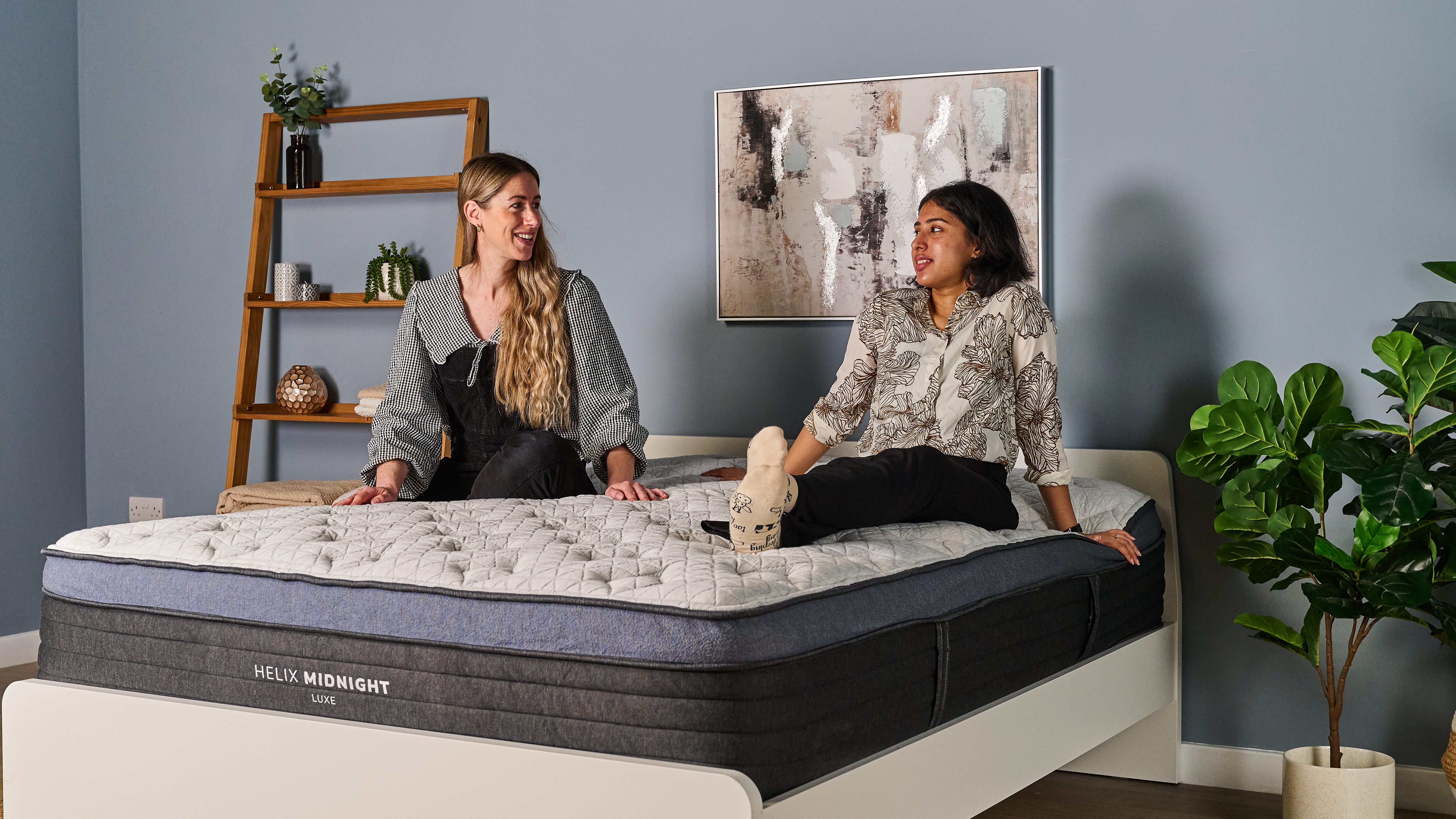Tom's Guide Verdict
The affordable UE Mini Boom sounds good, gets loud and keeps the frills to a minimum.
Pros
- +
Gets loud without distorting
- +
Good bass response
- +
Free app expands features
Cons
- -
Flat treble tones
- -
Can't control mobile device from speaker
Why you can trust Tom's Guide
Most portable Bluetooth speakers try to up the ante in some way, usually by adding more features or brighter colors to separate themselves from the crowd. Logitech's Ultimate Ears (UE) Mini Boom keeps the frills to a minimum, but makes a statement with its power: This little speaker can get loud, enough to fill a large room. It also produces good overall sound and can be found for about $80, making it a bargain.
Design
The Mini Boom keeps it simple, with few buttons or controls on the speaker. On the top are three large buttons, with which you can raise or lower the volume or put the speaker into Bluetooth-pairing mode. On the back, you'll find a power switch, a microUSB port for charging and a 3.5 mm auxiliary port for a wired connection to an audio source. That's the extent of it — no play or call controls like you find on the Jawbone Mini Jambox and Soundfreaq Pocket Kick.

The cylindrical 4.4 x 2.6 x 2.2 speaker isn't as svelte or easy to tote as the rectangular, 6 x 2.3 x 1-inch Mini Jambox or the 5.9 x 2.5 x 1.2-inch Pocket Kick. Inside the case, two 1.5-inch drivers produce the sound and a 1.5-inch passive radiator helps makes the bass richer.
The Mini Boom is available in five color combinations for some variety: black case with a black grill, orange with gray, purple with yellow, black with red and black with yellow. I tested the black/black model.
MORE: Best Bluetooth Speakers Available Now
Setup and Use
I quickly paired the Mini Boom with iOS and Android devices. It includes NFC for easiest connection with Android devices; just touch the Android device to the top of the speaker and accept the connection in the dialogue box that pops up on the screen.
For iOS devices, you can put the Mini Boom into pairing mode by holding down the Bluetooth button on top of the speaker until you hear a chime, then finding UE MINI BOOM under Other Devices in Bluetooth settings.
Get instant access to breaking news, the hottest reviews, great deals and helpful tips.
The Mini Boom offers a free app for iOS and Android that expands your control options. You can turn off the alert sounds — by default, the Mini Boom plays a strummed guitar chord sound when you turn it on, for example. This is a nice touch.

You can also select from among three EQ settings: Out Loud, Intimate and Vocals. Out Loud produces the most bass; Intimate lowers the bass, and Vocals boosts the midrange tones. I used Out Loud for my testing.
If you have two Mini Booms, you can have both play from the same source. You can even set it so that the two act as left-right speakers. I didn't test the feature, but have found it useful in other speakers.
Logitech claims you can get a wireless connection range of 50 feet. I found that the speaker maintained a clear signal at 30 feet with a clear line of sight, but after that it started breaking up, especially with walls between the speaker and me.
Audio Performance
The UE Mini Boom has good sound for a speaker this size, and it sounds better as you turn it up. Unlike the Mini Jambox, the Mini Boom doesn't distort until you reach around 90 decibels — more than enough power for a large room.

The Mini Boom's strengths are in the midrange and bass tones. Rihanna's vocals stood out above Paul McCartney's acoustic strumming on "FourFiveSeconds," while Diana Krall's contralto tones resonated richly on her version of "California Dreamin'."
As I raised the volume to 80 decibels, the bass on Mark Ronson's "Uptown Funk" took over. I could feel it in my chest. The bass break in the Beastie Boys' "Shake Your Rump" rattled the table, which the Soundfreaq Pocket Kick couldn't do. However, the bass is not well balanced with the treble; the Mini Jambox produced an overall better sound because the bass, treble and midranges were better aligned.
The Mini Boom lacks brightness in the treble tones, which can cause it to sound a bit flat. McCartney's acoustic guitar on "FourFiveSeconds" lacked the crispness the Mini Jambox produced, and the horns on Charles Mingus' jazz classic "Goodbye Pork Pie Hat" sounded flat overall. The Mini Jambox better balances treble, bass and midrange tones to produce a better overall sound.
MORE: The Best Headphones Available Now
Speakerphone
The speakerphone worked well, improving the volume of my conversations compared with the iPhone's built-in speakerphone. The voices of people I called were clear, and people I called reported the microphone on the unit performed comparably to the one on the iPhone.

Unlike many Bluetooth speakers that have speakerphone functions, such as the Mini Jambox and Soundfreaq Pocket Kick, on the Mini Boom, you can't control the call from the speaker; there's no button to accept or end a call. You must use the phone instead, which I found inconvenient.
Battery Life and Charging
Logitech claims the UE Mini Boom will run for 10 hours on a full charge. After listening for about 10 hours over several days, I still had more than a quarter charge remaining — similar to my test results for the Mini Jambox and Pocket Kick.
Bottom Line
For $80, the UE Mini Boom is a very good portable Bluetooth speaker. When playing most music, its bass and midrange will deliver sound that pleases the ear. But it's the volume that impresses most: It gets loud enough to fill a large room, even one with plenty of people in it.
Among Bluetooth speakers under $100, I prefer the Mini Jambox, which is more stylish, offers better overall sound and has a few more features than the Mini Boom. But if you're looking for portable speaker that can really drive the party, the UE Mini Boom is an excellent choice.

Michael Gowan is a freelance technology journalist covering soundbars, TVs, and wireless speakers of all kinds of shapes and sizes for Tom’s Guide. He has written hundreds of product reviews, focusing on sound quality and value to help shoppers make informed buying decisions. Micheal has written about music and consumer technology for more than 25 years. His work has appeared in publications including CNN, Wired, Men’s Journal, PC World and Macworld. When Michael’s not reviewing speakers, he’s probably listening to one anyway.

